Typically, the doghouse is the last place you want to be. A dogtrot however? For many across the eastern United States and well beyond, it’s the best possible structure to find yourself in – and has been for hundreds of years. This historic home style goes by a variety of names (you may know it by possum-trot or dog-run, for example) but is nonetheless an iconic architectural style — the Appalachian cabin.
Still a defining feature today, the dogtrot layout is easy to romanticize, but its origins are rooted firmly in function and building technologies available in the 1800s. Featuring an open breezeway flanked by a long room on each side, the layout was incredibly practical — preventing fires and maximizing livable space.
“You had one side that was a kitchen, one side that was a living room and in the middle was an open area to avoid any fire or safety hazards, and it was all under one roof,” explains Mathew Sterchi, the vice president of sales and marketing at StoneMill Log & Timber Homes.
Beyond the footprint, the log shape, corner style and use of chinking also played a key role in creating the Appalachian look. “The dovetail notching on the ends of the logs [and] the chink space is an integral part of the style,” says Steve Hall, the vice president of sales, marketing and special projects at Hearthstone Homes. “And the hand-hewing rounds out this style. Our ancestors hewed the logs flat on the sides so that they would shed water better.”
“The flat log profile, the dovetail corner, the chink joint, the dogtrot design … that combination is appealing, because it creates that vintage look like it was back in the Smoky Mountains in the 1800s,” affirms Mathew.
With such function-driven form, it is easy to see why the vernacular has endured for centuries. And yet, Appalachian style homes are certainly not frozen in time.
“We’ve taken that style and updated it with modern manufacturing,” explains Dorie Workman, the vice president of advertising and marketing for Appalachian Log Structures. “Chinking materials now are pliable. So as your wood may settle, shrink and swell with the changes in temperatures, the chinking won’t crack like the old-timey cement. And the materials that have been used to finish the house — the windows, the gasketing, the joinery, the solid tongue and groove — those have improved the efficiency of the home. But the look [it creates] is still very much the same.”
Ready to achieve the look and feel of old Appalachia? Here’s your guide to crafting an Appalachian-style home anywhere you please.
The Prestwick by StoneMill Log & Timber Homes
Photo and plan courtesy of StoneMill Log & Timber Homes
Square Footage: 3,294
Bedrooms: 4
Bathrooms: 3 Full, 1 Half
Covered porches, stone fireplaces and large closets … it’s easy to see why the Prestwick has become one of StoneMill’s most popular plans. A contemporary interpretation of a dogtrot layout, this plan is made for modern entertaining with a large foyer, a formal living room and not one, not two, but three fireplaces throughout. Mathew notes a popular customization for the Prestwick is the addition of a home office, ideally completely covered in stone. “We also do a lot of extended outdoor living spaces that flow out off the living room and have double-sided fireplaces and outdoor kitchens,” he adds.
The Fair Oaks by Appalachian Log Structures
Photo and plan courtesy of Appalachian Log Structures
Square Footage: 2,084
Bedrooms: 3
Bathrooms: 3 Full, 1 Half
“It’s one of our standard designs, but there is no such thing as standard design,” Dorie says. “Everybody has a different lot and different needs.” This Appalachia-inspired plan is prime for customization – it can be expanded, contracted, rotated, modernized and more. With a dining room and kitchen on one side and the primary bedroom on the opposing, it’s easy to see the DNA of the dogtrot layout at play. “Here at our model, it is done with the dovetailed logs with chinking on the outside, so it has that traditional Appalachia look,” Dorie explains. “But the backside has an intersecting roof line that has a wall of glass. So, the front side of it looks very traditional, and the backside just looks a little more contemporary.” The best of both worlds!
The Retreat by Hearthstone Homes
Photo and plan courtesy of Hearthstone Homes
Square Footage: 2,423
Bedrooms: 3
Bathrooms: 2 Full, 1 Half
This plan’s got classic style with modern perks. A long front porch, a centered front door and gabled dormers give this cabin serious curb appeal, not to mention an air of traditional authenticity. On the side, an adjoining office wing made from SIPs and stone with a timber frame roof system supports the modern, work-from-home lifestyle but looks like it was added on over time. Out back, a sunroom, porch and bumped-out breakfast nook cement the sit-and-stay-a-while lifestyle.
Take a Closer Look
Design is in the details, particularly when it comes to achieving authenticity in such a historically significant vernacular. Here, Mathew Sterchi of StoneMill Log & Timber Homes provides an up-close-and-personal look at some of the defining details — and materials — of Appalachian homes.
Dovetail Joints

“In my opinion, what really separates the Appalachian-style log cabin from other log cabins across America is the notching system, or your corner system,” proclaims Mathew. “What started out as what we call a V notch, which is characteristic of a German-Scandinavian influence, then evolved into what we now know as your full dovetail. That corner style is really indicative of Appalachian style.”
Chinking

“You had the evolution from the old chink joint in the 18th century, which was a lot of clay, mud, horsehair and anything you could pack into that joint,” says Mathew. “And then that evolved into a mortar joint, which, when you get expansion and contraction in the logs with a static mortar joint, there’s no pliability, there’s no flexibility. So, when logs expand and contract, that mortar joint cracks and separates, and it doesn’t do its job of keeping the elements out. And then in the late ’70s and early ’80s, synthetic chinking products were developed by companies like Sashco and Perma-Chink that are flexible so that they can expand and contract with the logs, which keeps everything nice and snug and tight to keep the elements out, year after year.”
Flat Logs

“Historically, they would start off with a tree and debark it. They used to put it on a sawhorse, and then they would take a broad axe and they would flatten out the face,” explains Mathew. “What they learned from their ancestors was that round faces would create a situation where water flowed along the face of the log and back into the log. So, the flat profile helped to prevent water from coming back into the wall.”




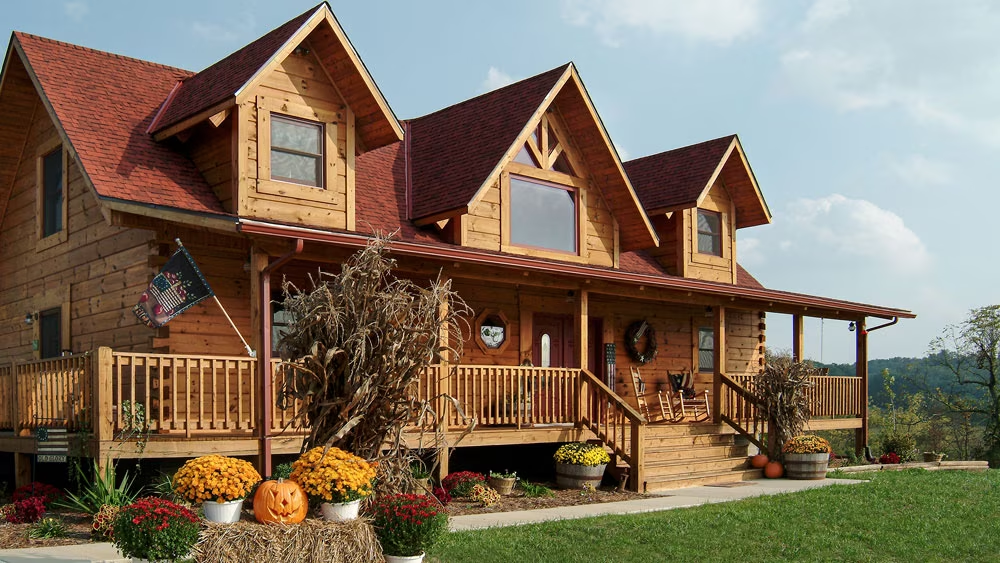
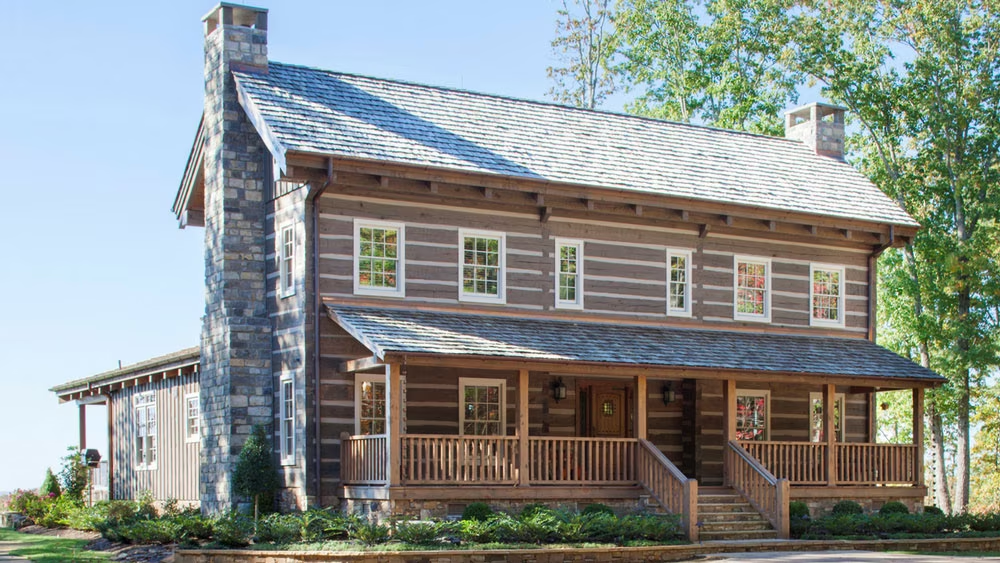
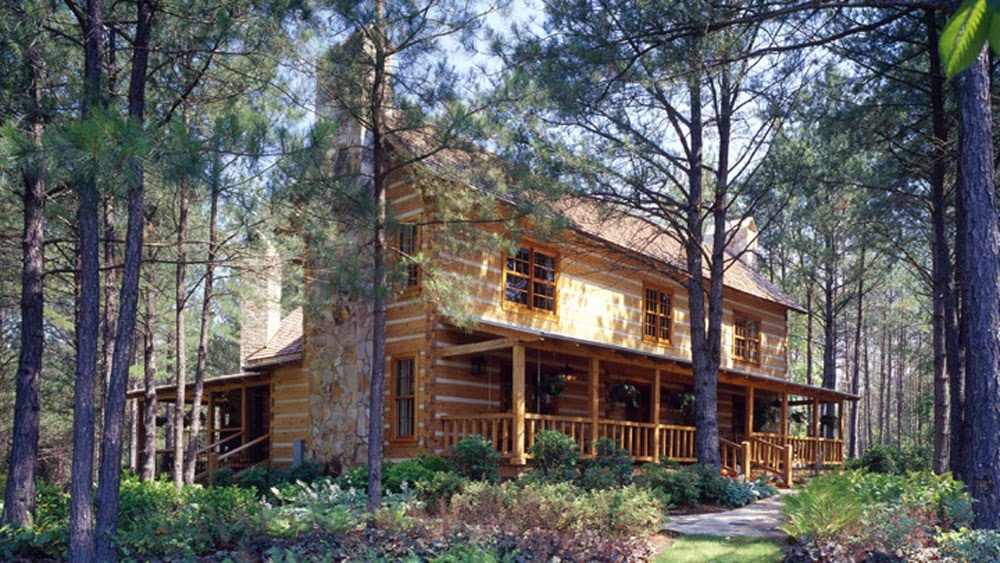
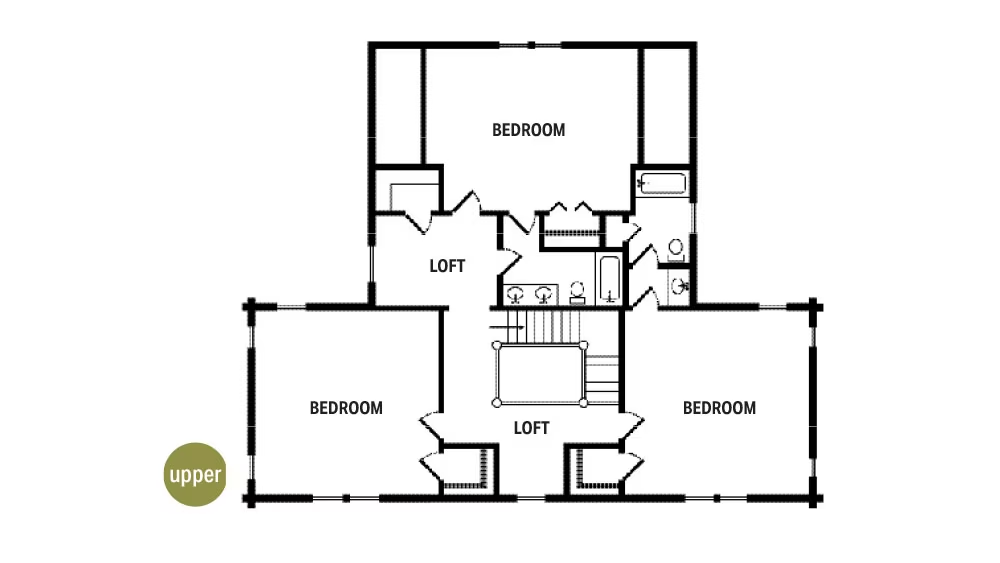
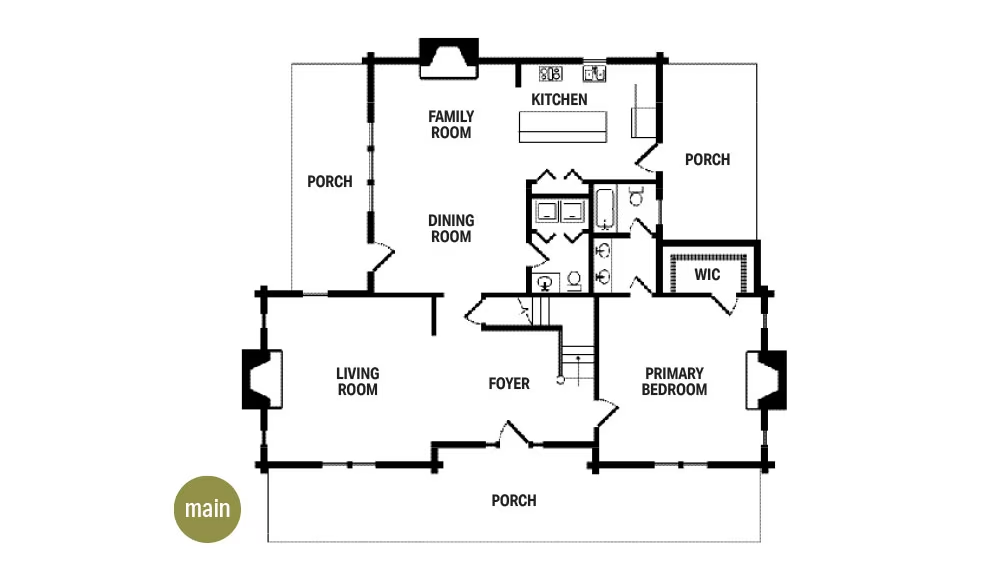
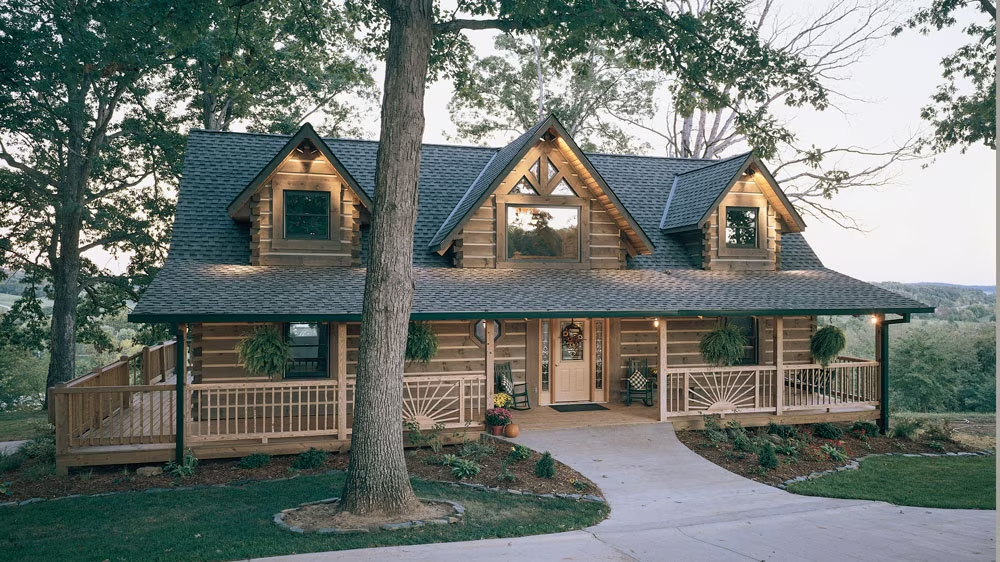
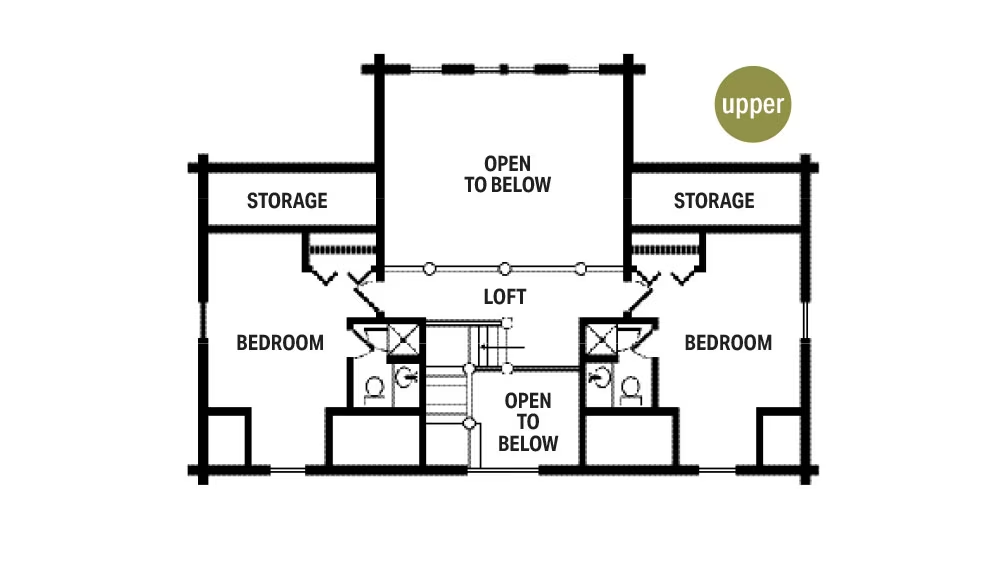

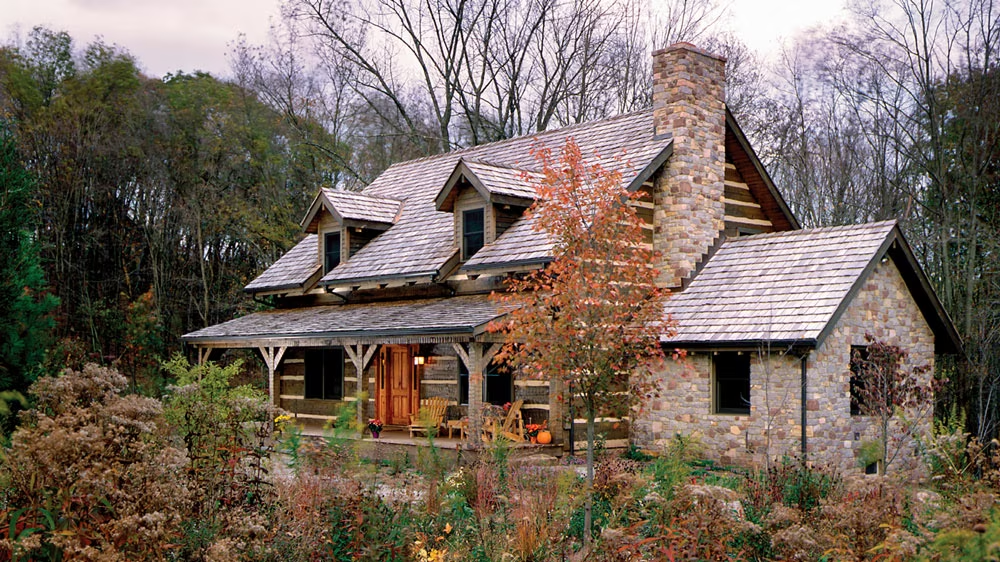

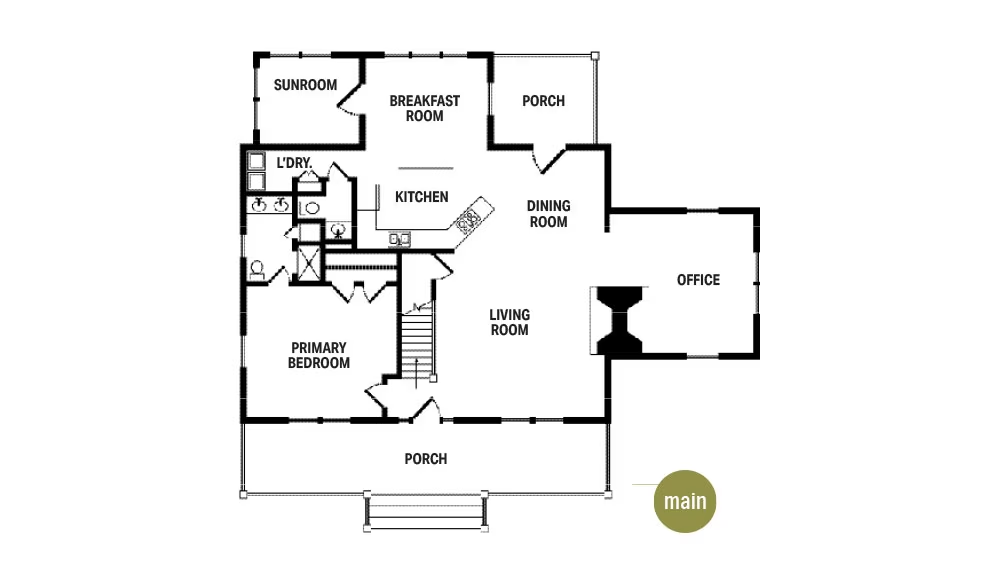


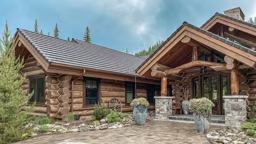

_11868_2024-09-17_08-44-256x288.avif)


